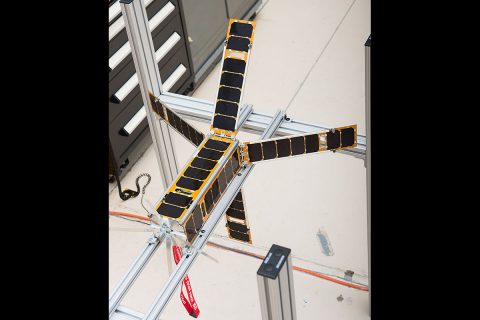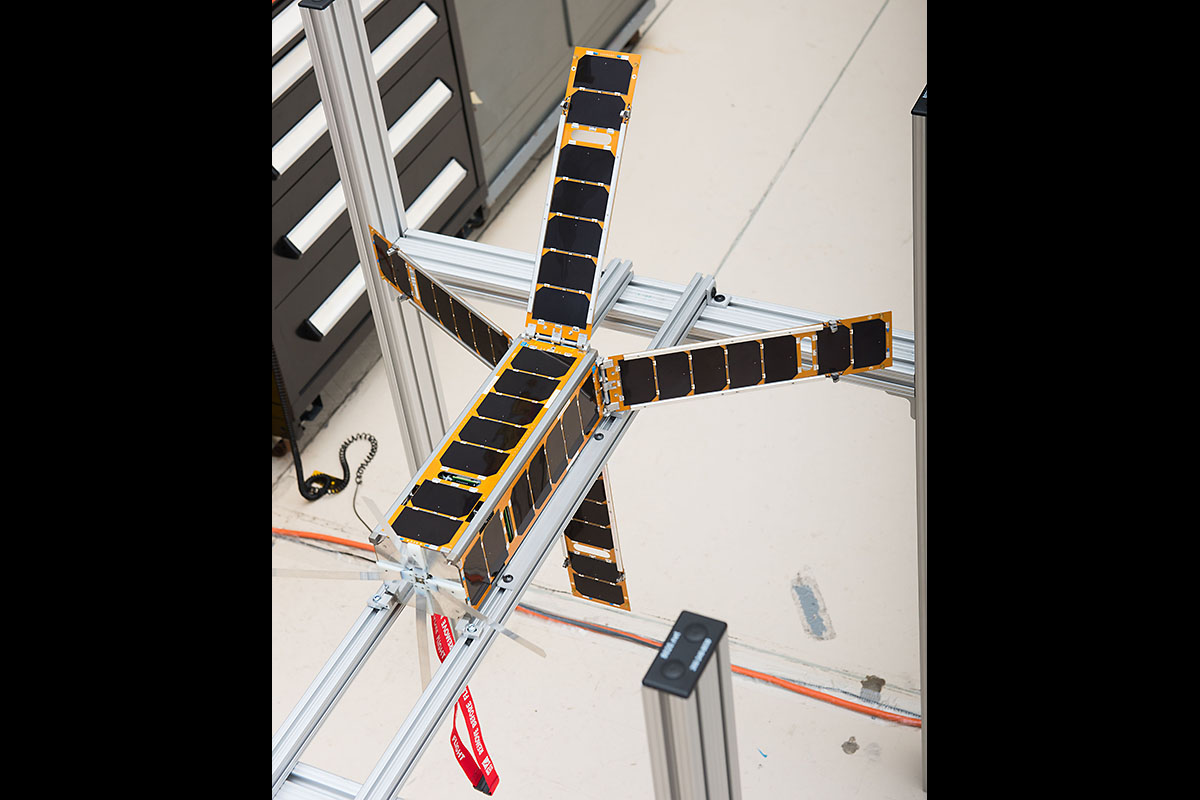NASA Glenn Research Center
 Cleveland, OH – A new CubeSat, launched Sunday, December 16th, 2018 will test high power electric systems and the use of unique shape memory alloy (SMA) components for the first time.
Cleveland, OH – A new CubeSat, launched Sunday, December 16th, 2018 will test high power electric systems and the use of unique shape memory alloy (SMA) components for the first time.
Completely designed and led by a team of 12 early career scientists and engineers at NASA’s Glenn Research Center in Cleveland, the Advanced Electrical Bus, or ALBus, will be the first CubeSat to demonstrate power management and distribution of a 100-watt electrical system. The CubeSat will also employ a custom-built SMA release mechanism and hinges to deploy solar arrays and conduct electricity.

CubeSats are very small, lightweight satellites, about the size of a loaf of bread, and typically operate within a power range of 5-20 watts.
Lower power systems are typically used in CubeSats because of size and weight limits, while higher power systems and components cause excessive heat.
“We looked at some of the challenges of high-power CubeSat applications – power management and distribution, system performance and reliable release of solar arrays – and how we could use Glenn technologies and in-space power expertise to address them,” says Project Manager Katie Oriti.
If ALBus successfully validates its 100-watt power system, it could open up future opportunities for different advanced CubeSat missions requiring high power, while adding functions like electric propulsion and advanced communications systems to these small satellites.
ALBus will collect energy from solar arrays and store it in batteries as it conducts multiple tests of the 100-watt power system. On ALBus, all four solar arrays will be deployed by a single, resettable SMA mechanism, which is unique because, unlike other CubeSats, its arrays can unfurl at the same time. While the use of SMA in space isn’t new, they’ve been used on several high-profile missions like the Parker Solar Probe. The ALBus project expands SMA capabilities by creating new, more dynamic materials that could enable future missions.
“We developed advanced shape memory alloys that can function at high temperatures and perform in a stable and repeatable manner,” says Materials Research Engineer Othmane Benafan.
Another special characteristic of the SMA components is each solar array hinge will transfer electrical power from the respective array to ALBus’ power management system. This feature decreases the total number of parts needed, reducing weight and minimizing risk.
“This is done by conducting electricity generated by the solar arrays through the superelastic springs in the hinges,” said Benafan. “This is a novel use of superelastic SMAs, particularly in CubeSats where space and weight come at a premium.”
Unlike deployment systems used on other CubeSats that can only move once, ALBus’ SMA components are also capable of resetting, or moving, multiple times. This allows for greater design flexibility, additional pre-flight testing, and the ability to make last minute changes, which could improve future mission success rates.
The ALBus CubeSat launched out of New Zealand on a Rocket Lab Electron Rocket under NASA’s Venture Class Launch Services contract, and will operate in orbit for up to a year to prove the system is capable of operating 100-watt distribution in the low-Earth orbit environment.
ALBus was selected by NASA’s CubeSat Launch Initiative, which provides low-cost access to space for small satellites developed by NASA centers and programs, educational institutions and non-profits to conduct research in science, exploration, technology development, education or



